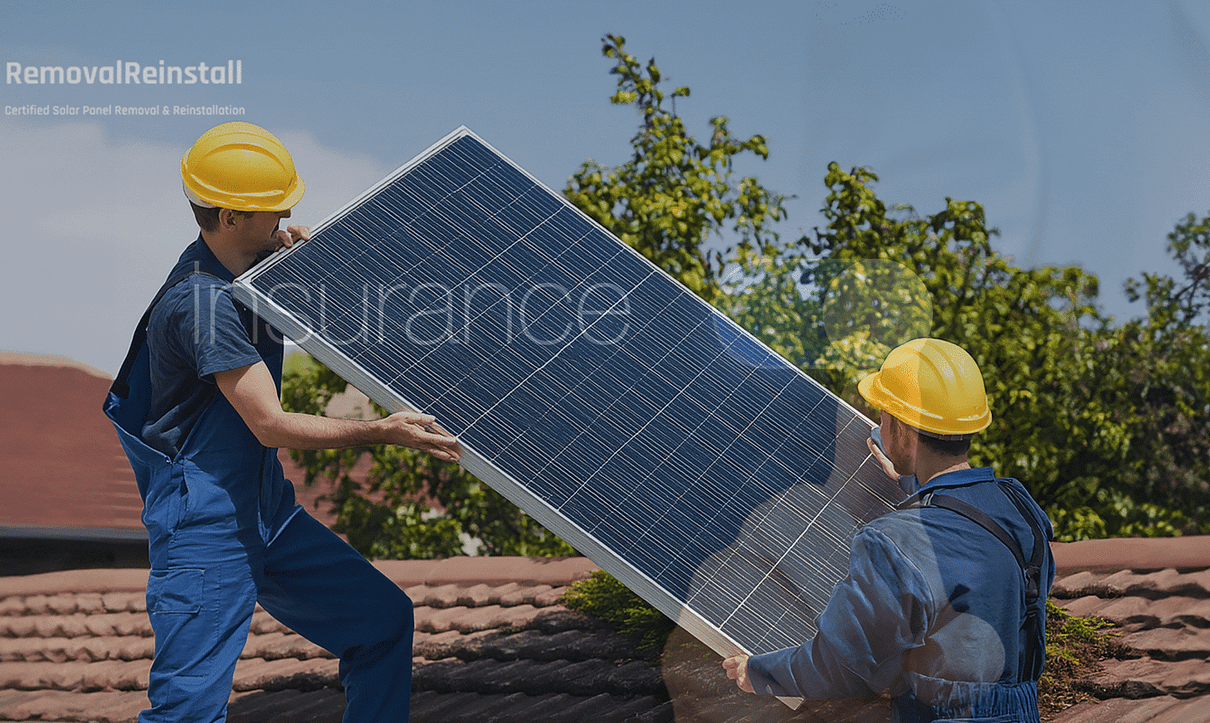Does Insurance Cover Solar Panel Removal And Reinstallation
When a roof is damaged or replaced, many homeowners wonder if their insurance policy will cover the cost of removing and reinstalling solar panels. The answer depends on the cause of damage, the type of coverage, and how the claim is handled. This guide explains what to expect and how to make the process smooth and stress free.
Introduction
As more homes across the United States adopt solar energy, many homeowners eventually face roof repairs or storm damage. When that happens, one of the most common questions is whether their insurance will also pay for the removal and reinstallation of their solar panels. Because every home, roof, and insurance policy is different, the best way to handle this process is with the help of experienced professionals who understand both roofing and solar systems. This article explains when coverage usually applies, when it does not, and why guidance from the right team can save time, money, and frustration.
Understanding How Homeowners Insurance Sees Solar Panels
Solar panels are typically considered a permanent part of your home once installed. In many policies, that means they are covered under dwelling coverage—the same section that protects your roof, walls, and foundation. In some cases, panels installed on detached structures, like a garage or pergola, may fall under other structures coverage.
Most homeowners policies protect against sudden and accidental events such as hail, wind, fire, or falling objects. If your roof is damaged by one of those causes, the insurer often pays for both the roof repairs and the costs to remove and reinstall the panels as part of restoring the home to its prior condition.
When Insurance Typically Covers Removal And Reinstallation
Insurance coverage usually applies when damage to your roof or panels is the result of a covered peril. Here are the most common examples.
Storm And Hail Damage
High winds and hail are among the leading causes of roof and solar damage in the United States. If a storm damages shingles, flashing, or panels, the insurance company often covers the removal and reinstallation costs because it’s part of restoring the damaged property.
Fire Damage
If a fire affects the roof or electrical system, insurers generally treat the solar array as part of the dwelling. Licensed solar and roofing professionals must safely disconnect, inspect, and reinstall once the structure is repaired.
Falling Objects
When branches, trees, or debris fall onto your roof, both the roofing and solar components can be affected. The insurer may cover the labor to remove and reinstall panels so the roof can be repaired correctly.
Roof Replacement After Covered Damage
In many cases, even if the panels themselves are not damaged, the roof beneath them must be replaced due to storm or wind damage. Since the panels need to be removed to complete that work, insurance usually covers the cost of removal and reinstallation as part of the claim.
When Insurance Usually Does Not Cover It
There are also situations when panel removal and reinstallation will likely not be covered by your insurance company. Understanding these cases can help homeowners avoid surprises.
Normal Roof Wear And Age
Insurance does not cover routine maintenance or normal wear. If you decide to replace an aging roof without storm damage, the cost to remove and reinstall solar panels is generally the homeowner’s responsibility.
Upgrades Or Voluntary Roof Changes
If you simply want to change from shingles to a metal roof or to improve appearance, insurance will not participate. Those are elective improvements, not repairs from a covered event.
Poor Installation Or Negligence
Damage caused by faulty installation, poor maintenance, or neglect is not covered. That’s why it’s crucial to always use licensed contractors who can document proper installation and maintenance history.
Why Professional Help Is Essential In Insurance Claims
For most homeowners, dealing with insurance paperwork and technical roofing details can be confusing. That’s where qualified professionals become essential. A licensed solar and roofing company knows how to communicate with your insurance adjuster, prepare the right documentation, and make sure the scope of work is accurate and approved. Having a knowledgeable partner can make the difference between a smooth process and a stressful one.
Professionals not only ensure that your system is safely removed and reinstalled, they also help you understand whether your situation qualifies for coverage. They can interpret inspection reports, identify hidden storm damage, and make sure all required items are included in the claim. This is why contacting a team like RemovalReinstall.com early in the process is so valuable.
Every Situation Is Unique
No two homes are the same, and every policy has different wording. The type of damage, your deductible, your roof type, and even the age of the system all affect coverage. That’s why it’s important not to assume anything before you speak with a professional who understands both insurance and solar work. Trying to handle the claim alone or hiring an inexperienced contractor can lead to incomplete approvals or out-of-pocket costs that could have been avoided.
Professionals can help review your policy language, coordinate with the adjuster, and provide detailed estimates that align with insurance standards. This personalized approach ensures the work is legal, safe, and properly documented.
Documentation Makes All The Difference
When filing a claim, documentation is everything. Take clear photos of all visible damage before any repair work begins. Keep records of your solar installation, including invoices, warranty information, and electrical diagrams. Provide these to your contractor and insurance adjuster. A professional company can also prepare a full report with photos, part lists, and the labor needed for removal and reinstallation, which helps justify coverage and speeds up approval.
How The Claim Process Usually Works
- Inspection and initial report – A qualified contractor inspects the roof and panels and determines if storm or accidental damage is present.
- Filing the claim – You or your contractor notify the insurance company and provide evidence of the damage.
- Adjuster evaluation – The insurance adjuster visits your property or reviews the documentation and decides what’s covered.
- Estimate and approval – A detailed scope of work is prepared, including roofing, electrical, and solar labor. The insurance company approves the budget.
- Work performed – Licensed professionals remove the system, repair or replace the roof, then reinstall and test everything.
- Final inspection and closeout – The job is inspected, documentation is submitted, and payment is released according to policy terms.
The Role Of Licensed Solar And Roofing Companies
Insurance companies usually require that work be completed by licensed professionals. This ensures the removal and reinstallation follow electrical and building codes, which protects the homeowner from future issues. Licensed contractors can also provide itemized invoices and proof of liability insurance, which insurers often need for claim approval.
When you choose a company that specializes in both roofing and solar, like RemovalReinstall.com, you gain one coordinated team that manages both sides of the process. That reduces miscommunication and ensures that all work passes inspection smoothly. Request your quote here to learn how professional coordination can simplify your insurance project.
Cost Breakdown And Estimates
The cost for removal and reinstallation depends on several factors including system size, roof type, distance, and local permitting requirements. On average, insurance estimates itemize costs for labor, roof repair materials, new mounting hardware if required, and electrical reconnection. A detailed estimate from a professional company ensures the adjuster understands the real scope of work and avoids delays in payment.
Permits And Code Requirements Still Apply
Even if insurance covers the project, local building codes still require permits and inspections. A new engineering plan may be necessary, especially if you are upgrading the roof or adding new attachments. A qualified contractor will handle all permitting steps to make sure your project is fully compliant and safely reconnected to the grid.
Tips For A Faster And Easier Claim
- Contact a professional solar and roofing company immediately after damage occurs.
- Take clear photos of all visible damage before temporary repairs are made.
- Keep copies of all invoices, estimates, and communication with your insurer.
- Ask your contractor to meet with the adjuster to explain the technical scope.
- Do not attempt to remove or repair panels yourself. It can void warranties and create safety hazards.
- Plan for inspections and utility approvals early to avoid project delays.
Helping Homeowners Find The Right Solution
Many homeowners feel uncertain when facing storm damage, insurance paperwork, and technical decisions at the same time. The best way to move forward is to connect with someone who knows how this process works and can represent you throughout the project. Professional guidance ensures that your claim is handled correctly and that your roof and solar system are restored safely.
At RemovalReinstall.com, our role is to guide homeowners, not just complete the job. We help evaluate your situation, coordinate with your insurance company, and provide transparent estimates so you can make the best decision for your home. Each project is different, and having an expert by your side protects your home, your time, and your budget.
Final Recommendation
Insurance can cover solar panel removal and reinstallation in many situations, but navigating the process requires experience and attention to detail. Working with a professional team helps ensure everything is done safely, legally, and efficiently. Every case is unique, so the best first step is to get a personalized assessment and quote. If you are planning a roof replacement or have storm damage, request your quote today and speak with experts who can help you through every stage.


